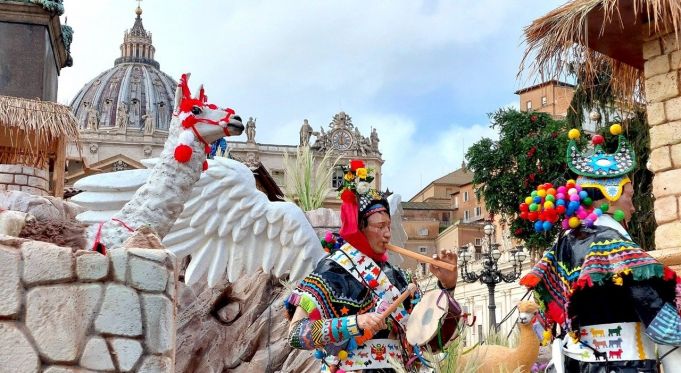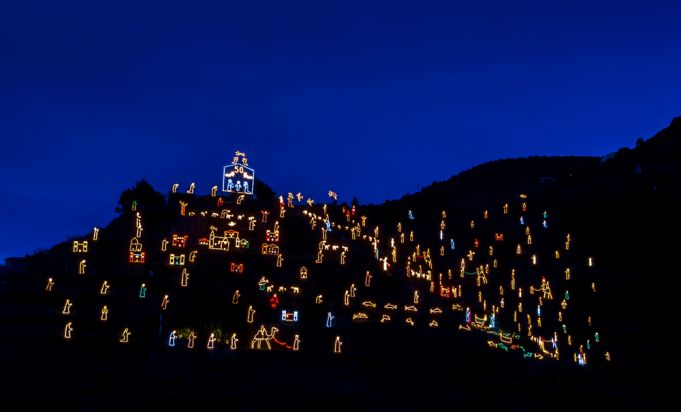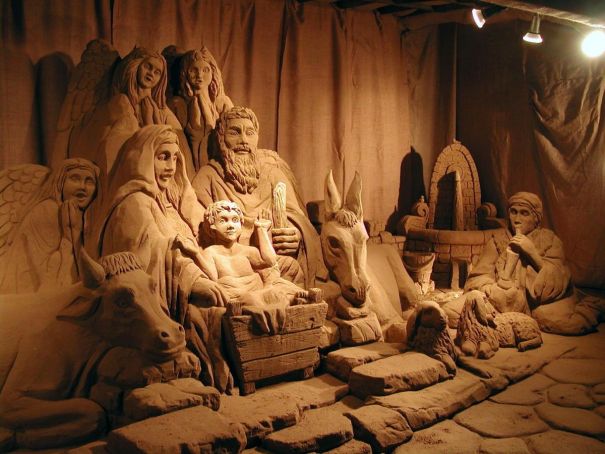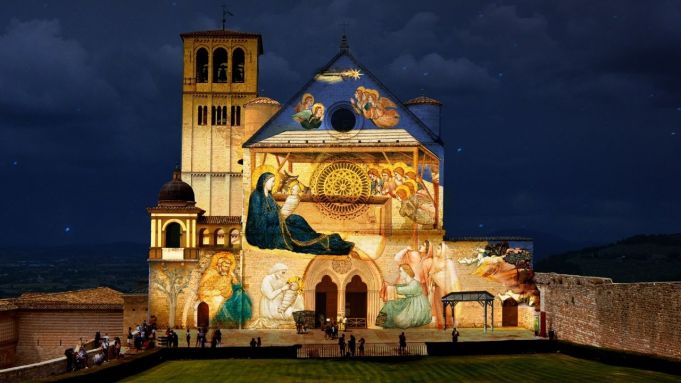Christmas in Italy is rich in traditions and offers a feast for the senses.
The presepe or Nativity scene plays a central role in Italy over the festive season, with Christmas cribs appearing across the country, and not just in churches.
Italy is after all, the home of the world's first Nativity scene, created in 1223 by St Francis in the hilltown of Greccio, north of Rome.
As might be expected, the Italian capital offers the world's greatest array of cribs, with some of the most unusual varieties on display at the annual 100 Presepi exhibition in St Peter's Square.
Alongside replicas of traditional Neapolitan, Sicilian and Roman mangers, there are modern versions made from wood and terracotta, as well as unconventional materials such as rice, metal or chocolate. There is even one in the driver's cabin of an ATAC electric bus.
Also in St Peter's Square this Christmas is the Vatican's first Nativity Scene from the Americas, with 30 life-sized figurines dressed in Andean costumes.

The Nativity scene - created by artists from the Chopcca Nation of indigenous peoples in Peru's remote Huancavelica region - features alpacas, llamas and a condor.
The figurines are dressed in traditional Chopcca costumes, with Baby Jesus wrapped in a typical Huancavelica blanket tied with a "chumpi" or woven belt.
Reflecting the times we live in, the church of S. Maria in Trastevere has a crib scene featuring masked people with a covid Green Pass, while the oldest sculptural Nativity in Rome, created by Arnaldo di Cambio in 1291, can be viewed inside the Basilica of S. Maria Maggiore.
To see the oldest Nativity scene made from stucco you will have to go to Urbino, in central-east Italy, where the Oratory of St Joseph hosts the 16th-century presepe of Federico Brandani.

Moving away from the traditional, Italy's riviera in the northern Liguria region is home to what is hailed as the world's largest Nativity scene.
The Cinque Terre hilltop village of Manarola is illuminated with 17,000 lights featuring around 250 life-sized figures, including shepherds and fishermen.

The seaside resort of Jesolo near Venice in north-east Italy hosts an annual festival with 12 monumental Nativity scenes made entirely from sand, by international sculptors.
Meanwhile the world's largest Christmas tree is lit up each year on the slopes of Monte Ingino, overlooking the mediaeval town of Gubbio in the central Umbria region.
The town illuminates the tree, measuring 750 metres in height, with more than 700 lights.
In recent years the pilgrimage site of Assisi, also in Umbria, illuminates its ancient landmarks with images of Giotto's frescoes.

Italy is also known for its magical Christmas markets, the most notable ones being in the north: Trentino, Aosta and Bolzano, as well as the Mercatino di Natale in Milan's central Piazza del Duomo, Arezzo (Tuscany) and Naples, which is also home to the street of artisan crib-makers on Via S. Gregorio Armeno.
Central and southern Italy boasts one of the most evocative traditions, and certainly the loudest: the bagpipe-playing shepherds known as zampognari.
Lastly it wouldn't be Christmas in Italy without tasty festive treats which vary from region to region.

Traditionally Italians eat a large seafood dinner on Christmas Eve, or la vigilia di natale, with the nation divided each year over which is the best Italian Christmas cake: pandoro and panettone.
Cover photo: Giant Christmas tree on Monte Ingino, Gubbio





















